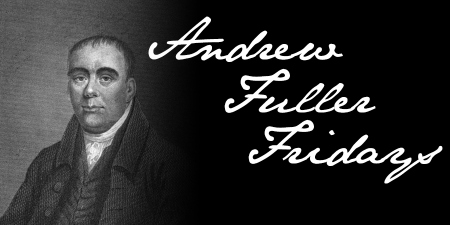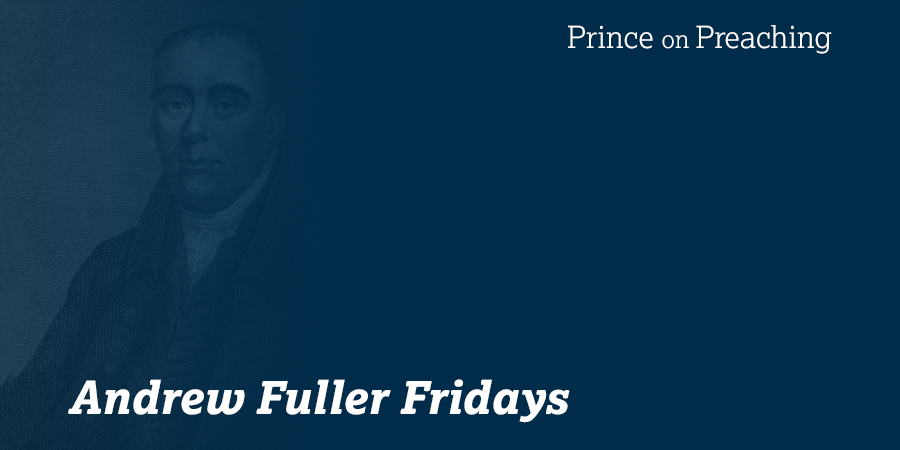In Andrew Fuller’s “Letters on Systematic Divinity,” his third was titled, “Plan to be Proposed,” and dealt with biblical-theological method. Fuller critiques analytical methods that overly systematize theology in a way that abstracts it from the redemptive historical storyline of Scripture. His proposal is a Christ-centered, gospel-focused method that always starts with Christ as Lord and Savior. Christ is the locus of meaning for the entire canon of Scripture Fuller explains that he intends, “to begin with the centre of Christianity—the doctrine of the cross, and to work round it; or with what may be called the heart of Christianity, and to trace it through its principal veins or relations, both in doctrine and practice.” He continues, “The whole of the Christian system appears to be presupposed by it, included in it, or to arise from it” ((Complete Works, Harrisonburg, VA: Sprinkle Publications, 1988: 690).
In the course of his larger explanation, Fuller has rich insight from 1 John 1:1-3 about the significance of the incarnation of Christ. Below I have printed 1 John 1:1-3 and provided excerpts of Fuller thoughts regarding the birth of Christ. I pray they will be encouraging to you as you celebrate the birth of the Word made flesh.
Merry Christmas,
David
That which was from the beginning, which we have heard, which we have seen with our eyes, which we looked upon and have touched with our hands, concerning the word of life— the life was made manifest, and we have seen it, and testify to it and proclaim to you the eternal life, which was with the Father and was made manifest to us— that which we have seen and heard we proclaim also to you, so that you too may have fellowship with us; and indeed our fellowship is with the Father and with his Son Jesus Christ. (1 John 1:1-3).
To view Great is the mystery of godliness, God was manifest in the flesh, justified in the Spirit, seen of angels, preached unto the Gentiles, believed on in the world, received up into glory.—This is a faithful saying, and worthy of all acceptation, that Jesus Christ came into the world to save sinners, of whom I am chief.—This is the record, that God hath given unto us eternal life, and this life is in his Son.—He that believeth that Jesus is the Christ is born of God.—Who is he that overcometh the world, but he that believeth that Jesus is the Son of God?” Fully aware that this golden link would draw along with it the whole chain of evangelical truth, the sacred writers seem careful for nothing in comparison of it. … We may be Christians by education, may be well versed in Christianity as a science, may be able to converse, and preach, and write, in defence of it; but if Christ crucified be not that to us which food is to the hungry, and drink to the thirsty, we are dead while we live. What is it that is denominated the great mystery of godliness? Is it not that “God was manifest in the flesh, justified in the Spirit, seen of angels, preached unto the Gentiles, believed on in the world, received up into glory?” It is this that the apostle John introduces at the beginning of his gospel under the name of “the Word:” “The Word was with God, and was God; by whom all things were made, and who was made flesh, and dwelt among us.” It is this upon which he dwells in the introduction of his First Epistle: “That which was from the beginning, which we have heard, which we have seen with our eyes, which we have looked upon, and our hands have handled, of the word of life; (for the life was manifested, and we have seen it, and bear witness, and show unto you that eternal life, which was with the Father, and was manifested unto us;) that which we have seen and heard declare we unto you, that ye also may have fellowship with us; and truly our fellowship is with the Father, and with his Son Jesus Christ.” Christ is here described, I have long considered this passage as a decisive proof of the Divinity of Christ, and as a summary of the gospel. Andrew Fuller, The Complete Works of Andrew Fuller: Memoirs, Sermons, Etc., J. Belcher, Ed., (Harrisonburg, VA: Sprinkle Publications, 1988), vol. 1: 691-691.





